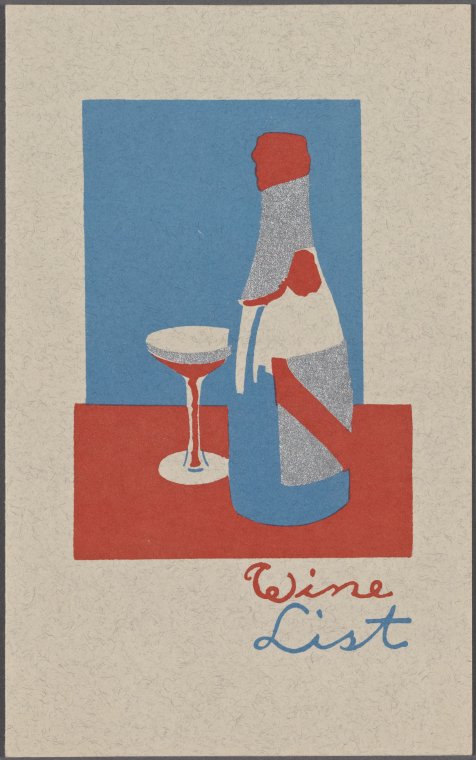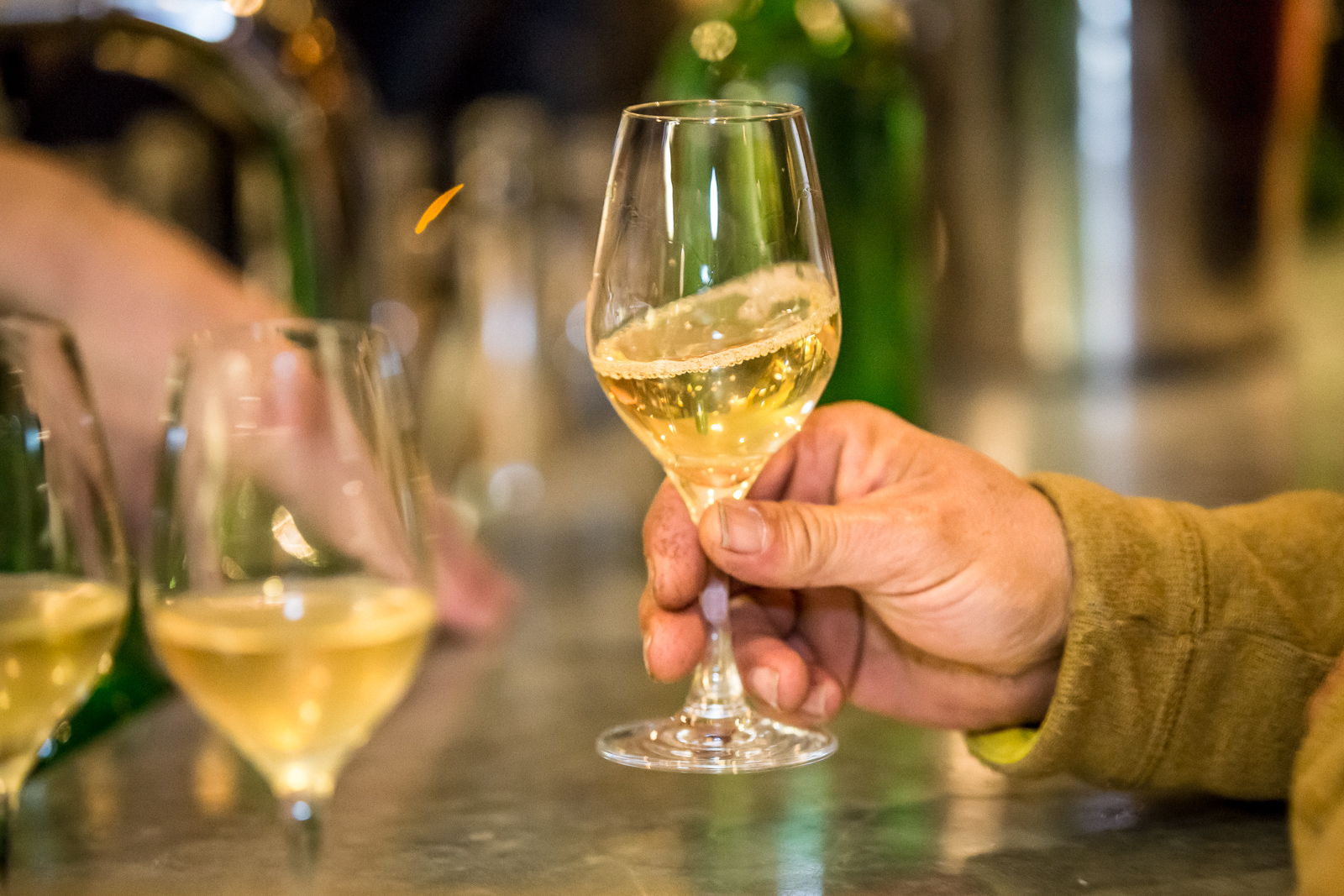Of mark-ups and wine accountancy

The one benefit of a recession, said a wine merchant to me way-back-when in 1991, is that good businesses emerge from it stronger, pared down and more efficient. Failure, he expounded further, is nature’s way of culling mediocrity. The amateurs, the transients, the get-rich-quick merchants are most likely to be found out as their enterprises are constructed on a whim and a prayer. (Unfortunately, so are some sustainable businesses who have the bad luck to be caught up in the mêlée).
Business, over the years, has become about business as short-term gain – only collect, as EM Forster did not write – rather than creating loyalty and enduring friendship and building a strong brand for the future that can survive in all economic climates. As the collapse of the speculative banking industry amply demonstrated in the recession that started in 2008, short-termism is a dangerous game. Successful enterprises require strong underpinnings, and that involves a process of building good will. For historical reasons, the relationships between restaurants and their suppliers have become unbalanced.
During the boom period it became so ridiculously easy to raise capital for quick expansion that some restaurants became bloated and lazy and began to lose sight not only of the fundamentals of hospitality, but also the tenets of constructing a viable business. Notwithstanding the obvious proposition that a business, for example, should grow within its means, the belief that it was necessary to grow quickly at all costs, created a series of unwarranted assumptions in the way commerce could be negotiated between restaurateurs and their suppliers. The former would look for the best deals, ranging from heavy discounts and extended credit terms to retrospectives, free stock and even to cash gifts and holidays. Since wine merchants didn’t want to bite the hand that would eventually pay them, they were content to go along with what was a patently lopsided arrangement. In short, the wine merchants and other suppliers were subsidising the success (or otherwise) of restaurants, whilst the intense competition to gain or retain business meant that their own profit margins were being damaged.
Successful enterprises require strong underpinnings, and that involves a process of building good will. For historical reasons, the relationships between restaurants and their suppliers have become unbalanced.
Accountants and purchase managers, bless them, are employed either to protect or ratchet up the gps. This usually entails pressing the supplier for greater discounts, trying to prevent price rises, deferring payment and a host of sleight-of-hand clawback methods. For the true bean-counter a net strong gp is actually more important than a busy restaurant, because economic variables can be understood, managed and monitored. It is said that accountants know the cost of everything and the value of nothing. This is not entirely fair – their brief is to analyse figures, set targets, not suggest methods how a restaurant might succeed. The typical business spreadsheet is the classic example of financial wish fulfilment. A spreadsheet posits theoretical profit-and-loss scenarios according to purchase and selling prices, but does not take the psychological temperature of customers, nor does it factor in macroeconomics (recession and depression). There is a “tip-over point” in the fortune of every restaurant when customers perceive it as poor value-for-money, which is as much a qualitative as a quantitative judgement. You may build your house on stone in the flexible economy, but you should still be prepared for shifting sands.
Bottles of wine are routinely and shamefully marked up four and even five times with the expectation that customers won’t bat an eyelid. But they will.
The GP, qua brute GP, has long been the consolation of bean counters and the bane of wine drinkers. Restaurateurs, fancying themselves as entrepreneurs, enamoured by the notion of exponential growth, also began to recite the mantra about hitting their “GPs”. Mark-ups have become more punitive as a result. The scale of the margin increased steadily from 65% to 70% and beyond, until now it is not unusual to see 75% and 78% averages. The magic gross profit targets cited by accountants are always shifting northwards and that is the result of a very fixed financial model.
Ergo, bottles of wine are routinely and shamefully marked up four and even five times with the expectation that customers won’t bat an eyelid. But they will. Wine is already taxed to the hilt, and every time there is a price rise, restaurants use that as an excuse to increase their net profit margin. Because they are so adamant about maintaining a consistently elevated GP, a wine which has increased by, say, £1, can and will be marked up by £3.50 (a net extra cash profit of £2.50). Bear in mind also that since the whole meal will tend to have an “optional service charge” added to the bill, the customer will be paying a further % increase on the wine. Meanwhile, other restaurants dig deep in their search for cheaper wines to hit rigged price points. Until buyers perceive that glass ceilings on prices are just that – ceilings which must be shattered – wine lists will become all the poorer as choice steadily diminishes.

These regressive approaches are counterintuitive in a recession when it is crucial to get people through the door and to convey value for money, whether you own a bar, café or Michelin starred restaurant. In the real world of real bums on real seats, real people are deciding where to spend their hard-earned. Perception is everything and I could give an unhealthy roll call of places where value and quality is deemed subservient to the bottom line. If you insult a customer once, you insult him or her forever. The main problem with multiplying axiomatically by a fixed margin is that you end with a price that bears no relation to the real value of the wine. It is therefore commonplace to see massive differentials between restaurants for the same wine according to who has applied a rigorous gp and who has applied a variable or cash mark up. With search facilities on the net and sharing of information on social media, restaurants will be found out if they are obviously charging more than their competitors for wines that they have paid the same price.
Until buyers perceive that glass ceilings on prices are just that – ceilings which must be shattered – wine lists will become all the poorer as choice steadily diminishes.
Wine buying, especially for groups and larger establishments, has become formulaic. The product is often sourced to fit the margin. As prices naturally rise, this inevitably leads, as I have said, to a diminution of quality. When you purchase food for a restaurant you can still be creative, for example, by looking at cheaper-but-equally-delicious cuts of meat or other types of fish. You can buy seasonally, which also helps with costs. You can eliminate wastage with carefully planned menus. Cheap wine is cheap for a damned good reason; remove the duty from the equation and the cheap wines are almost invariably mass-produced, anaemic and dreary. You wouldn’t go to a restaurant to eat a battery farmed chicken, nor should you pay over the odds for mediocre, industrial wine. The logic of accountants is perverse, however, for they never ask “Why are we more expensive”, but rather “why are we cheaper?” in the drive for top prices (which is race to the bottom).
A more equitable solution might be for restaurants to apply a cash margin to wines on the list. It might be a fixed- or variable – cash margin. Several benefits would accrue. Firstly, the value of the wine would become transparent. Secondly, more expensive wines would be affordable to more customers, incentivising them to spend more money on better wines which, in turn, would create a culture of interesting and informed wine drinking. Attractive pricing in turn allows for greater rotation of stock ensuring better cash flow. There are plenty of good examples where cash margins are used effectively, and it is no coincidence that these are currently amongst the busiest restaurants in London. You can market a restaurant on the basis that it is good value for money; you can’t market it on the basis that it charges more for the same product.
Now that we are again in a time of economic uncertainty there is an opportunity to re-establish good practice…The morality of business is to survive virtuously, to build solid foundations for the future, and to be a link in the chain between happy customers and happy suppliers.
Now that we are again in a time of economic uncertainty there is an opportunity to re-establish good practice. Restaurateurs can either continue to squeeze suppliers for better deals (thereby squeezing them into oblivion) or take some responsibility. If they use higher cost prices as an opportunity to reinvigorate their lists by critically examining their margins and employing clever initiatives to upsell, I commend them. The morality of business is to survive virtuously, to build solid foundations for the future, and to be a link in the chain between happy customers and happy suppliers. And not, in the words of Mr Boffin from Dickens’ Our Mutual Friend to “scrunch or be scrunched.”
So far, I’ve been talking about gross profit in terms of direct cause and effect, but let us look at root causes. Notwithstanding regressive taxation on wine, the main reasons that restaurants have to adjust their margins are the above-inflation increases in rents and rates. It is easy to blame greedy and unscrupulous commercial landlords (and I do), but they would not be able to get away with their antics if there was a system that capped increases for small businesses or linked rents to tax and profit. Growth in the UK economy has been built on an overwrought property market; it is not sustainable and when it cools off the economy itself either flatlines or goes into reverse. If restaurants are struggling to meet the demands of higher rents, rates and wages they have, by definition, to re-examine their business model. This means higher gross profit margins have to be achieved on food and wine, which in turn means putting prices up or looking for higher discounts from suppliers, or buying cheaper produce. You can only finesse this for so long; in the end prices will go up and quality will go down.

This sounds like a death spiral. So, what can be done to mitigate price rises? Well, rather than working against suppliers, or auctioning business on the basis of (cheap) price, working in partnership with these suppliers would be a truly positive step. Minimising the cost of servicing the account, for example, might enable the supplier to offer better prices. Other ways of reducing cost, or adding value, might include bigger orders/fewer deliveries, minimising the number of sale-or-returns; paying within the trading term period in exchange for extra discount; being flexible to the point of taking on bin ends and small parcels; working on pr/social media in conjunction with wine companies; hosting joint events; taking training seriously in order to enhance staff knowledge and skills, thereby increasing motivation, productivity and upselling. This holistic and sustainable approach to buying and selling is more long-term than looking at the bottom line and chasing the pennies. Oh, and allowing sommeliers and wine buyers a measure of creative license in the way they sell wine, would help to engender a wine culture which in turn would lead to increased wine sales. Conversely, if the bean-counter mentality prevails, then any individual who is seriously interested in wine (and interesting per se) will leave the restaurant and perhaps eventually the hospitality industry altogether.
Rather than working against suppliers, or auctioning business on the basis of (cheap) price, working in partnership with these suppliers would be a truly positive step.
Perhaps it is time to critically assess the whole restaurant industry and re-examine the various models for running a business. One approach to running a business is to wrap it in quality; selling good products, having a strong service ethos, displaying all-round consistency and an understanding of the principles of hospitality. The other is to look at the business as a means to an end; that end being to open other businesses off the back of the primary business or to create a profitable exit strategy for the investors. The latter approach always results in a dilution of quality, because the decision-makers, the people who end up running the business, often have no love for it, no imagination, and no understanding of the creative and responsive aspects of running such a business. Those who work in restaurants, be they chefs, managers or sommeliers, are not the tools of the business; they are individuals and give value to the business as such. And there would be no business without customers, and with greater choice of places to dine out in the UK, restaurants need to provide improved experiences to maintain the loyalty and good will of those customers. Higher gross profit margins and exponential wine mark-ups simply reduce quality as well as diminishing value for money. The figures might look good on a spreadsheet, but in the end customers (and staff) will vote accordingly. And let’s never ignore the moral argument in this analysis and that involves respecting the golden rule of business, respecting the suppliers, respecting the growers of food and producers of wine and respecting the environment. So many businesses in their desire to grow abandon the very principles that made them succeed in the first place.


I agree with everything you say here, and more. In the current economic climate we have both rising inflation and a currency devalued by up to 20%. Restaurants have to accept that wine will cost them more than it did a year ago and suppliers should refuse to be squeezed. Restaurants that do try this will have to go elsewhere for cheaper wine, but they should not under estimate the effect of a poor wine list on a large part of their customer base. That is even more true if the wines they list are of the type you sell.
I also think people who love wine in the UK are complacent. We have always been a major market that producers want to be part of. But travel a bit and you can see how the rest of the world is open to wine now. As someone who has spent time in Tokyo it’s amazing to see just how many unicorn natural wines are on sale there, wines we might get have taken for granted that we could source here a couple of years ago.
We risk losing our place as a country in which to find the most innovative wines as a result of the economic results stemming from the brexit vote (which I sadly believe may hit the wine trade quite badly). We risk that outcome even more if the whole business (importers, retailers, restaurants) don’t work together to ensure these wines still come here. For that to continue, producers have to believe in our importers and have faith that they are strong enough businesses to continue to work with them and to continue to pay them.
Thanks for your comments, David, and,needless to say,I agree with them wholeheartedly.